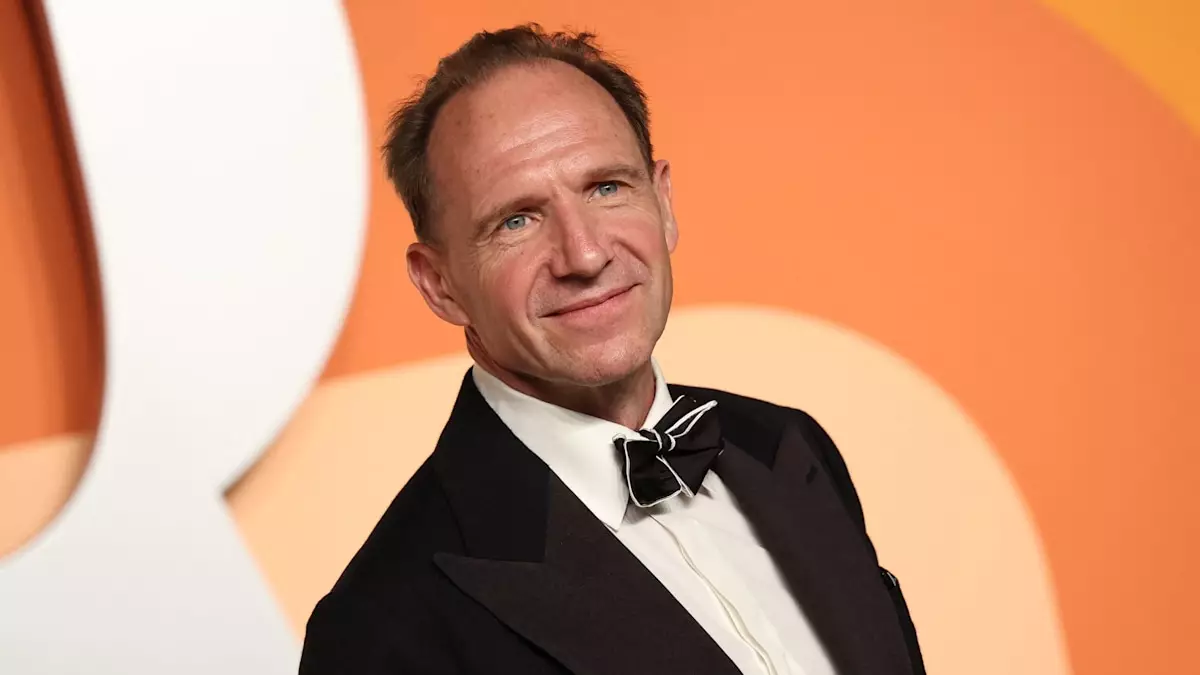Ralph Fiennes, the acclaimed actor known for his unforgettable portrayal of Voldemort in the Harry Potter series, has taken on a new challenge beyond the realms of acting. Recently, he drew significant attention not only for his artistry but also for an astounding physical transformation before his role in a remake of “The Return.” At 62 years of age, Fiennes’ stunning makeover signifies a monumental shift, not only in appearance but also in the underlying dynamics of fitness and well-being for older adults.
This noteworthy transition was accomplished through an extensive five-month training regimen led by personal trainer Dan Avasilcai. Their hard work encompassed a blend of rigorous weight training and running, carefully balanced with a nutritional plan focused on proteins, complex carbohydrates, and fresh vegetables. While the external changes have certainly captivated fans, they also inspire a deeper dialogue regarding how fitness, nutrition, and aging intersect in ways that can benefit everyone.
The Commitment to Change
Fiennes’ makeover, prominently featured on social media, has triggered an overwhelming response from fans, many expressing awe at how different he appears compared to his recent role in the political thriller “Conclave.” Such dramatic physical changes usually conjure images of vanity. However, they also underline the dedication required to maintain such a transformation, particularly in later stages of life.
Personal trainer Jack Claxton from David Lloyd Clubs reflects on the rigorous process behind achieving such fitness milestones. According to Claxton, a commitment to four to five weekly gym sessions, focused on combining strength training with an athletic framework, is crucial. This dual approach not only boosts aesthetics but also enhances overall health—one of the primary aims for any fitness journey, especially for seniors.
The Realities of Aging and Fitness
As individuals age, the concept of fitness evolves dramatically. Gone are the days where merely lifting heavier weights or performing intense cardio defines success. Instead, contemporary fitness approaches for seniors emphasize longevity and independence. Fitness expert Ronni McKay from GymBox stresses the importance of personalized training plans rather than generic regimens, positing that older adults must engage in exercises calibrated to their unique capabilities and needs.
There lies an essential truth in McKay’s assertion—the necessity for safely engaging with fitness modalities that honor where one is physically, rather than attempting to replicate youthful endeavors. Older adults are encouraged to prioritize balanced programs that not only build strength but also support mobility, vital for maintaining an active lifestyle as they age.
From Intensity to Adaptability: The Fitness Shift
For those inspired by Fiennes’ transformation but unsure of where to start, Claxton suggests a more tempered entry into fitness. Beginners might benefit from two or three weekly sessions, utilizing machines to minimize injury risks while still focusing on resistance training. Incorporating elements such as cardio to improve cardiovascular capacity is equally important, and it can be tailored to match one’s fitness level.
The journey to fitness, particularly for older adults, should include circuit training that balances upper and lower body workouts with core and stability exercises, ensuring a rounded approach to movement. This strategy not only promotes joint health and shape but also emphasizes the functional aspects of daily living—primary concerns for those seeking longevity and independence.
Building a Resilient Fitness Foundation
The challenges posed by aging present an opportunity to reframe how we view exercise and wellness. The key lies in nurturing a solid foundation through mindful, adaptive strategies. McKay emphasizes the significance of compound exercises such as squats, deadlifts, and presses—movements that engage multiple muscle groups and foster practical strength, directly applicable to everyday activities.
Moreover, consistency is paramount. Simple mobility drills can significantly enhance both movement and quality of life, showcasing that even short, daily commitments can yield substantial benefits. As Fiennes’ transformation highlights, commitment to health can permeate all dimensions of human existence, ultimately enriching life experience far beyond aesthetics.
It’s yet to be seen whether Fiennes will carry on with his intensive fitness regime post-transformation. Yet, it raises vital questions about personal investment in wellness, demonstrating that at any age, one can embark on transformative journeys that defy expectations. With the right framework, anyone can aspire to not just look better but also feel rejuvenated and more capable in their golden years.

